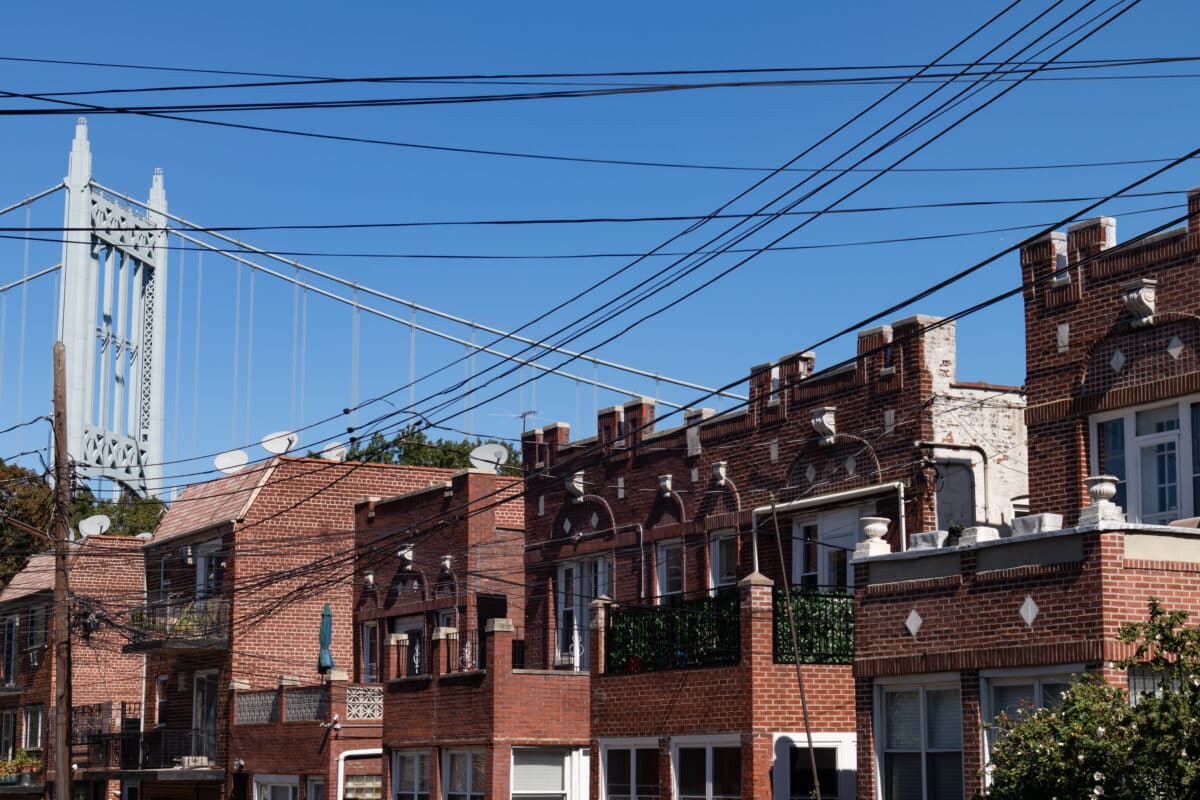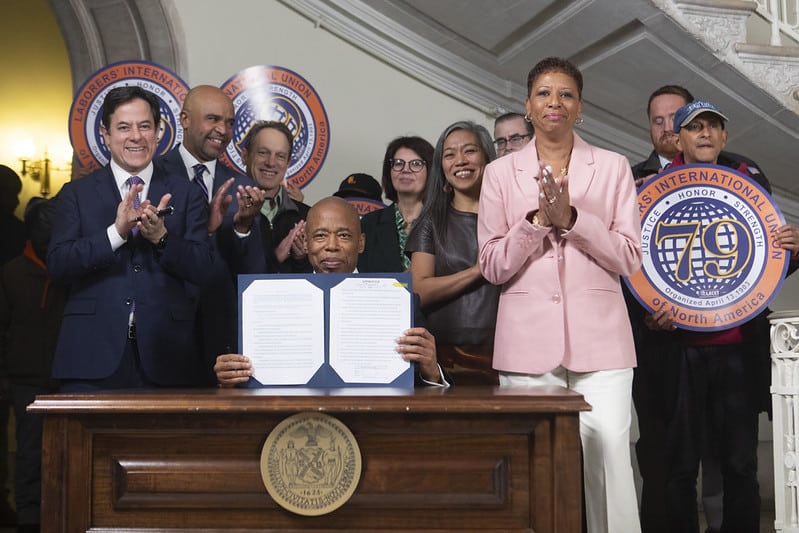New York City will set targets for how much new housing each of its 60 community districts should build every five years under legislation that Mayor Eric Adams signed into law Wednesday.
The “Fair Housing Framework”, outlined in legislation which unanimously passed the City Council last month, aims to tackle the Big Apple’s dire housing shortage by compelling neighborhoods that have traditionally evaded building new homes — traditionally whiter, more affluent corners of the city — to contribute their “fair share.”
The targets will include benchmarks specifically for affordable, senior and supportive housing units.
“I’m really proud to stand side-by-side with Speaker [Adrienne] Adams to begin to right some of the wrongs in the history of our city,” the mayor said before signing the bill at City Hall on Dec. 13.
“This is an important time to sign an appointment bill,” he continued. “And I know that, together with the council, we continue to expand our housing inventory and ensure that we build more, build better and build affordable.”
Specifically, the legislation requires the city’s Departments of Housing Preservation and Development (HPD) and City Planning (DCP) to come up with fair housing plans every five years, and report on the progress of those plans each year. The first reports are due in October 2025.
It also mandates the preservation of existing affordable housing, protecting against the displacement of longtime residents and investing in neighborhoods where the most new housing has been built in recent years — typically lower-income communities of color.
Speaker Adams, who was also in attendance, said the legislation sets the “expectation” that communities with better infrastructure, open space, schools and public transit access start taking a bigger role in combating the city’s housing crisis.
“Too many neighborhoods have been able to opt out of building affordable housing, while others have shouldered more of the responsibility and deserve greater investments,” the speaker said. “This leaves too many New Yorkers out of a real chance at stable housing. By establishing housing production targets, we’re setting the expectation that every district must equitably contribute to addressing the housing crisis.”
Still can’t force new housing

The legislation, however, does not contain a mechanism to force specific areas to build more housing — something the council says it does not have the power to do without revising the City Charter or action from the state legislature.
Instead, the measure is designed to achieve its targets for each area by giving community stakeholders a larger role in the planning process — a process which, Speaker Adams noted, they have been locked out of in the past.
“Communities have been complaining for years that they have not been able to sit at the table, where decisions have been brought to them and placed to them, because … others know better,” the speaker said. “And that’s just not the case.”
Mayor Adams is separately trying to boost housing production across the five boroughs through his “City of Yes for Housing Opportunity” zoning text amendment.
The suite of zoning rule changes are aimed at building a little more housing in every corner of the city with measures like allowing for small residential development on commercial strips, eliminating parking mandates for new construction and allowing builders to add 20% more housing to projects as long those units are affordable.
“Our proposal is one that allows for growth throughout the entire city,” said Department of City Planning Commissioner Dan Garodnick. “A modest amount of growth throughout an entire wide geography will, in the aggregate, result in a significant amount of housing, together… This is a significant package that we believe will be important for the next 10 years, but also for the next 80 years.”
Read more: George Santos criticizes former colleagues and denies knowing Baldwin.



































